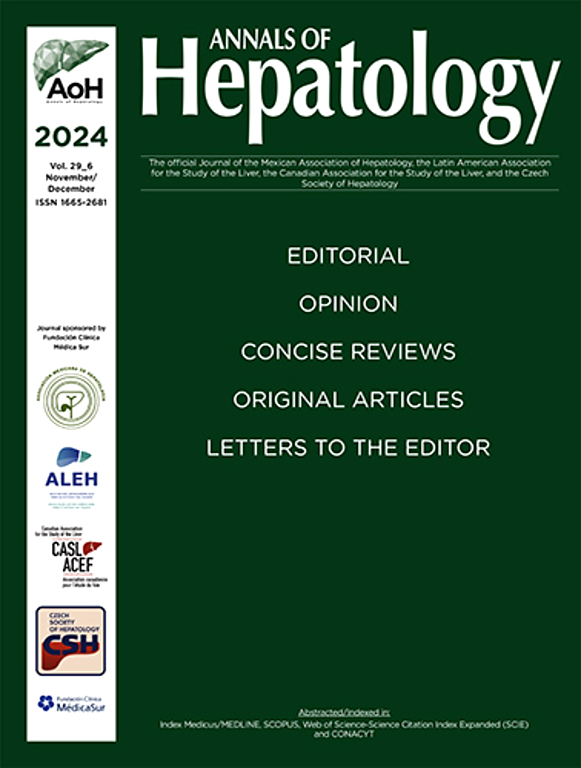Gut-related molecules as potential biomarkers in patients with decompensated cirrhosis
IF 3.7
3区 医学
Q2 GASTROENTEROLOGY & HEPATOLOGY
引用次数: 0
Abstract
Introduction and Objectives
Microbial translocation contributes to cirrhosis progression and complications. This study aims to investigate whether molecules related to intestinal permeability or microbial translocation can serve as prognostic biomarkers in patients with decompensated cirrhosis.
Materials and Methods
We prospectively evaluated hospitalized patients with decompensated cirrhosis for liver function, complications during hospitalization, in-hospital mortality, composite outcomes of in-hospital mortality and complications, 12-month mortality, and survival rates. Blood samples were collected upon admission, and 1,3 beta-d-glucan, zonulin, calprotectin, and lipopolysaccharide-binding protein were measured using commercial kits.
Results
Ninety-one patients with decompensated cirrhosis were enrolled. The mean age was 58 ± 12 years; 57% were male. The three main cirrhosis etiologies were hepatitis C (35%), alcohol (25%), and non-alcoholic steatohepatitis (17%). In terms of liver function, 52% were Child C, and 68% had model for end-stage liver disease ≥15. The in-hospital and one-year mortality rates were 31% and 57%, respectively. Child-Pugh, 1,3 beta-glucan, and model for end-stage liver disease were positively correlated; zonulin was associated with complications during hospitalization (acute kidney injury) and composite outcomes, and calprotectin was associated with all outcomes except 12-month mortality.
Conclusions
Serum calprotectin and zonulin levels emerge as noninvasive prognostic biomarkers for potentially unfavorable outcomes in patients with decompensated cirrhosis.
作为肝硬化失代偿期患者潜在生物标记物的肠道相关分子。
导言和目的:微生物易位导致肝硬化进展和并发症。本研究旨在探讨与肠道通透性或微生物转运相关的分子能否作为失代偿期肝硬化患者的预后生物标志物:我们对肝硬化失代偿期住院患者的肝功能、住院期间并发症、院内死亡率、院内死亡率和并发症的综合结果、12个月死亡率和存活率进行了前瞻性评估。入院时采集血液样本,使用商业试剂盒测定1,3β-d-葡聚糖、zonulin、钙蛋白和脂多糖结合蛋白:结果:共招募了 91 名失代偿期肝硬化患者。平均年龄为 58 ± 12 岁,57% 为男性。肝硬化的三种主要病因是丙型肝炎(35%)、酒精(25%)和非酒精性脂肪性肝炎(17%)。就肝功能而言,52%的患者为Child C,68%的患者的终末期肝病模型≥15。院内死亡率和一年死亡率分别为31%和57%。Child-Pugh、1,3 β-葡聚糖和终末期肝病模型呈正相关;zonulin与住院期间的并发症(急性肾损伤)和综合结果相关,而钙蛋白与除12个月死亡率以外的所有结果相关:结论:血清钙蛋白和 zonulin 水平是肝硬化失代偿期患者潜在不利预后的无创预后生物标志物。
本文章由计算机程序翻译,如有差异,请以英文原文为准。
求助全文
约1分钟内获得全文
求助全文
来源期刊

Annals of hepatology
医学-胃肠肝病学
CiteScore
7.90
自引率
2.60%
发文量
183
审稿时长
4-8 weeks
期刊介绍:
Annals of Hepatology publishes original research on the biology and diseases of the liver in both humans and experimental models. Contributions may be submitted as regular articles. The journal also publishes concise reviews of both basic and clinical topics.
 求助内容:
求助内容: 应助结果提醒方式:
应助结果提醒方式:


